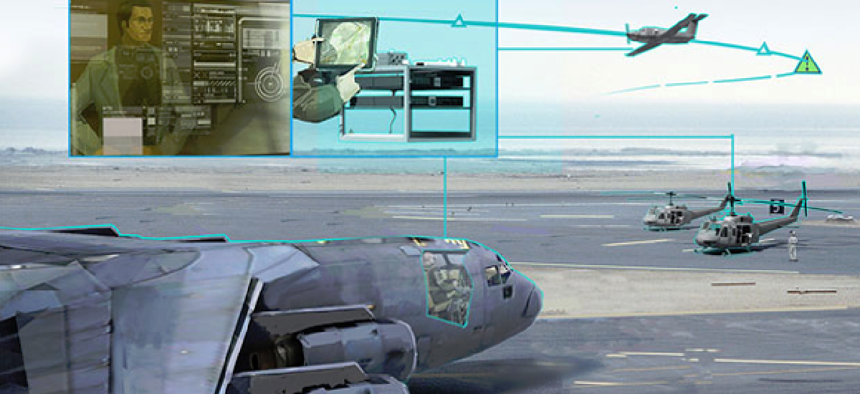DARPA demos optical sense and avoid for drones


Connecting state and local government leaders
The Aircrew Labor In-Cockpit Automation System detects oncoming or crossing aircraft and determines the best avoidance strategy.
One of the keys for unmanned aircraft operation -- especially as drones integrate into the national airspace -- is reliable sense-and-avoid technology.
Using a shoebox-sized, plug-and-play system in a UAS, researchers at the Defense Advanced Research Projects Agency were able to automatically detect and track -- in real time -- a Cessna 172G aircraft as it approached from several angles.
DARPA’s goal for the Aircrew Labor In-Cockpit Automation System (ALIAS) is to overcome challenges associated with complicated interfaces during unexpected mid-air emergencies with a low-cost, easily installed system that detects oncoming or crossing aircraft and determines the best avoidance strategy.
The sense-and-avoid package includes an optical camera that provides imagery for detection and tracking as well as passive ranging features that assess incoming aircraft flight paths so the host aircraft can steer clear.
“What pilot wouldn’t want to set a box on their dashboard that would provide an additional pair of eyes to alert of potential collisions?” DARPA Tactical Technology Office Program Manager Daniel Patt, asked. “This [sense-and-avoid] system has the potential to enable a wide range of manned and unmanned systems to safely integrate into an increasingly populated and complex airspace.”
The ALIAS program focuses on three technology areas:
- Development of minimally invasive interfaces between new automation systems and existing aircraft
- Rapid adaptation of the ALIAS toolkit across different aircraft
- Human-machine interfaces that lessen the need for pilots’ constant vigilance over lower-level flight maintenance tasks.
Eventually ALIAS envisions a tailorable, drop-in, removable kit to enable high levels of automation in existing aircraft and to reduce the need for crews onboard.
Follow-on research will shrink the size of the system, mature capabilities -- such as detecting aircraft below the horizon and in poor light -- and improve calculations for optimal aircraft trajectories to avert collisions.
ALIAS research could contribute to future air traffic management systems that are part of the Federal Aviation Administration’s NextGen air transportation system, DARPA officials said.
NEXT STORY: FAA gets micro drone recommendations




